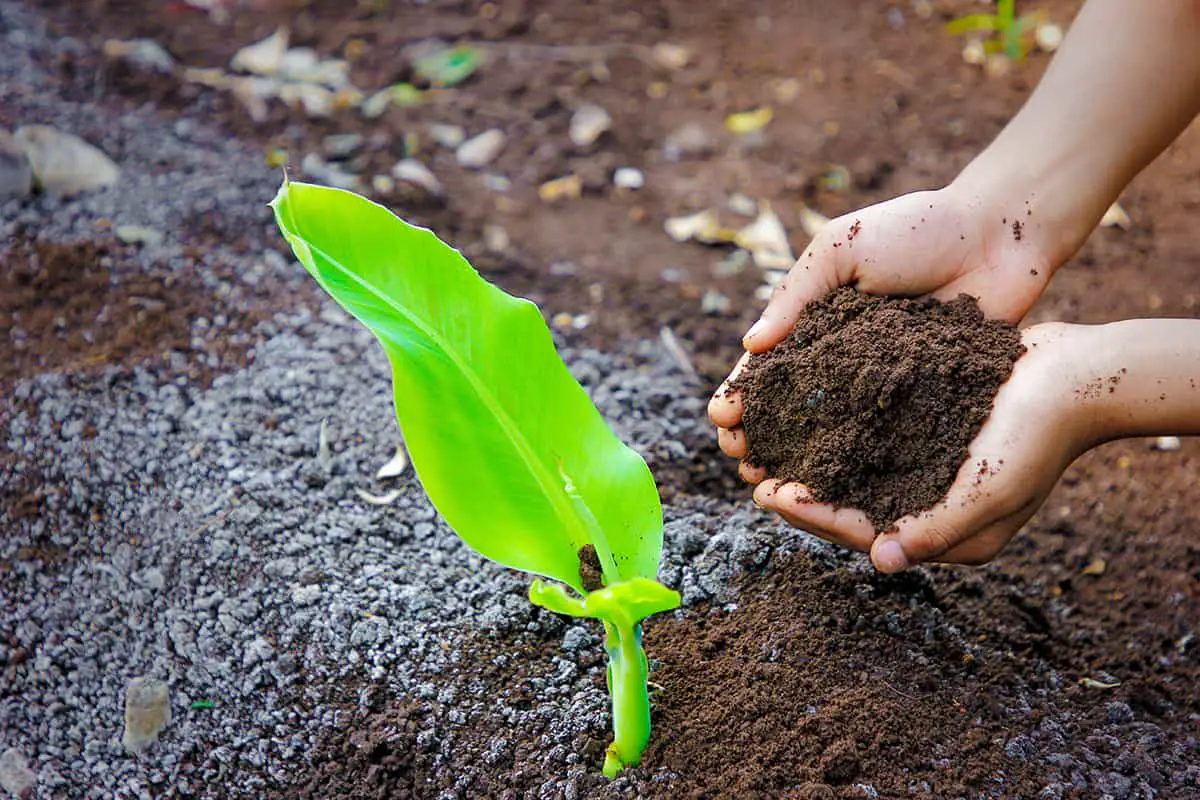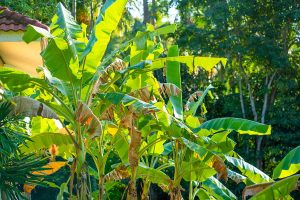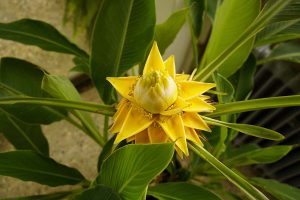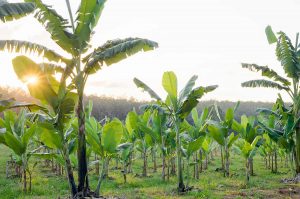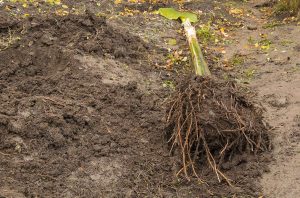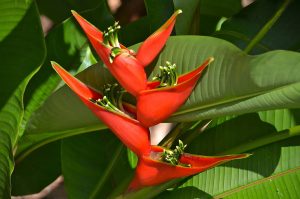Banana trees are heavy feeders which rely on frequent fertilizer applications. Learn all about how to fertilize your banana plant here.
Table of Contents
Do Banana Trees Need Fertilizing?
Banana trees are incredibly fast-growing, and in order to sustain this growth and ensure optimum performance from these plants, they do need to be fertilized quite heavily. Banana trees grow to typical mature heights of between 20 and 40 feet, and they can reach these levels in less than a year.
Fertilizer will need to be applied at least once a month throughout the growing season, or alternatively, it can be given in slightly diluted doses during every watering of the plant. Without fertilizer, the banana tree will exhibit stunted growth, and a lack of nutrients can also cause the leaves to discolor and die off.
Best Types of Fertilizers for Banana Plants

Banana trees need plenty of nitrogen, potassium, and phosphorus, but there are also a number of micronutrients and secondary nutrients that are important for the healthy growth of this plant and its ability to produce an abundance of fruits.
There are several different ways you can choose to fertilize this plant, depending on your preference, and all of them will produce good results.
Balanced fertilizer
The easiest way to fertilize a banana tree is to do so using a balanced fertilizer. When choosing a fertilizer, you should check the ratios on the label to see the way the nutrients are balanced out in the formula. The ratio will be in the N-P-K format, which stands for nitrogen, phosphorous, and potassium.
This means, for example, if a fertilizer is shown as having a ratio of 10-8-6, it means that there are 10 parts nitrogen to 8 parts phosphorus, and 6 parts potassium. The numbers do not reflect quantity or weight, but they reference the ratio of nutrient levels contained in the fertilizer.
Using a balanced fertilizer works well for most plants, including banana trees, because it ensures that the plant gets good levels of the main three nutrients, along with smaller quantities of the less important micronutrients. It works well for many plant owners because it takes the guesswork out of feeding the plants and means that all of the plant’s fertilizer needs can be met in one swift application.
If you intend to feed your banana tree with a balanced fertilizer, look for one which has similar amounts of nitrogen, phosphorus, and potassium, for example, with an N-P-K of 10-10-10, 10-10-9, or 8-10-8, or something similar.
Avoid fertilizers that have an overwhelmingly heavy ratio of one nutrient unless you plan to give supplemental feeding. A balanced fertilizer will need to be given on a monthly or even bi-weekly basis throughout spring and summer, depending on the guidelines of that specific fertilizer.
Adapting fertilizer to flowering season
If you have more time available to spend on getting the nutritional needs of your banana tree just right, then adapting its fertilizer throughout the season, depending on its changing needs, can be a good option for optimum performance. During spring, the banana plant produces lots of new foliage, and the nutrient most important for foliage growth is nitrogen.
However, when the plant is flowering and consequently producing fruit, the more important nutrients for this are phosphorus and potassium. You can adapt the fertilizer to suit the plant by feeding it a nitrogen fertilizer in spring through to summer until the plant starts to form flower buds. Once this happens, cease feeding nitrogen fertilizer and move to a fertilizer that is heavy in potassium or phosphorus.
Where to Apply Fertilizer for Banana Trees
Banana tree fertilizer should be applied directly to the soil, avoiding the trunk or stems of the plant. If you are using a granular fertilizer, dig this into the soil using a hand trowel and rake, working in a circle around the trunk of the tree.
For liquid fertilizer, this can be diluted in water and applied directly to the soil, avoiding coming into contact with the trunk.
How Often Should Banana Trees be Fed?
The frequency with which banana trees should be fed will depend on the type of fertilizer you are using and which method you prefer.
For a balanced granular fertilizer, add this to the soil of the plant once a month from early spring until the end of summer. A balanced fertilizer in liquid form can also be applied monthly throughout the same period, or you can dilute it and give it to the plant every time you water it.
Which Nutrients are Most Important for Banana Trees?
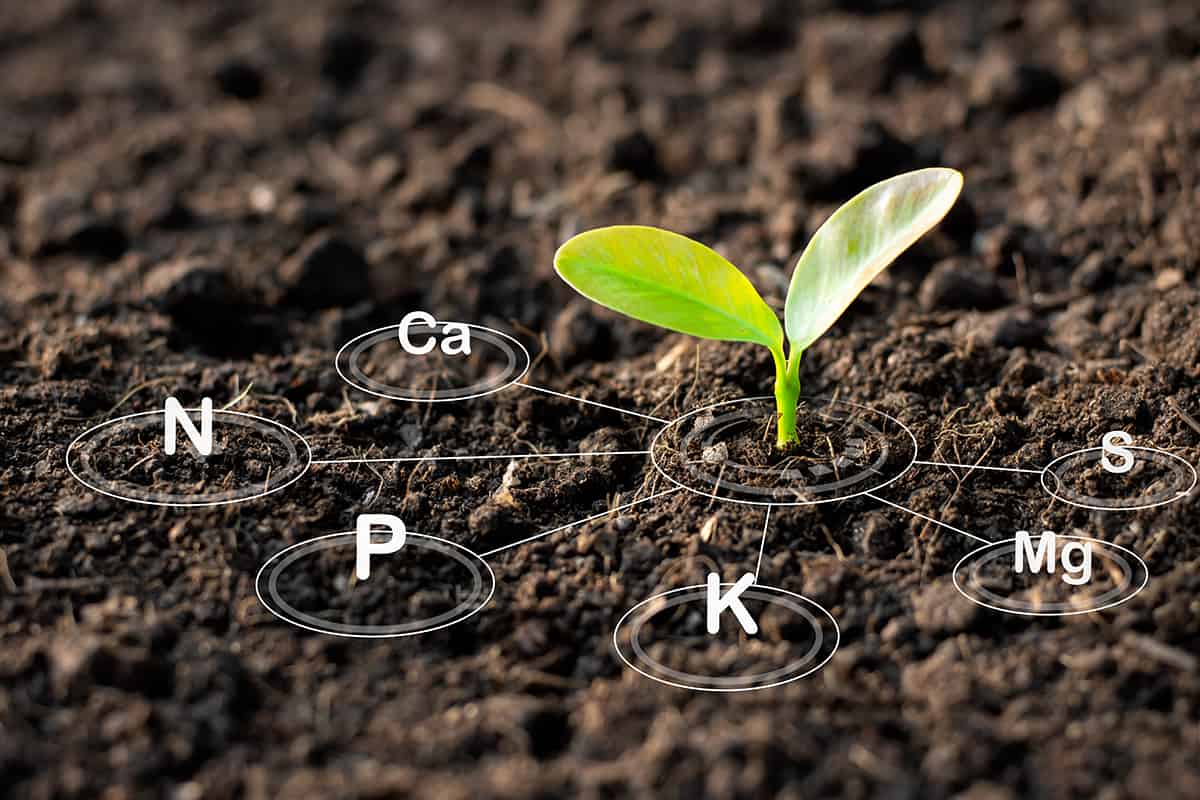
Nitrogen
Nitrogen is essential for the healthy development of banana trees. It plays a key role in many of the plant’s growth processes and is responsible for optimizing the levels of vitamin C in banana fruits. It also promotes plenty of lush foliage growth and helps to increase the weight of fruit bunches, along with the number of fingers on each hand of bananas.
Phosphorus
Good levels of phosphorus in banana trees will ensure strong root growth, and this nutrient is also responsible for helping fruit to set, and flower production. It can be fed to the banana plant throughout the growing season, or the phosphorus level can be increased after buds emerge to help with fruit setting.
Potassium
If you are growing banana trees for their fruit, then potassium is an essential nutrient because it plays a large part in determining fruit quality and yield. It helps sugars to accumulate in the plant and then distribute them throughout. Potassium also improves the size of the banana fruits and the pulp content.
This nutrient is not just needed for good flower and fruit development; it is also useful for ensuring the tree’s foliage is lush and abundant. Potassium can increase the size of the leaves and the overall height of the plant. This nutrient should be fed throughout the growing season of a banana plant, but it can be increased after flowering to help with greater fruit production.
Magnesium
Magnesium is a secondary nutrient for banana trees, but it is still important for the healthy growth of the plant, especially with regard to the yield of fruit. The magnesium content in soil is known to directly correlate to the number of fruits a banana tree yields and the size of the fruits. It is also a chlorophyll activator, making it essential for lush green foliage.
Calcium
Calcium is another secondary nutrient that helps banana trees to reach their best potential. This nutrient encourages strong root growth, which can help with the overall health of the plant, resulting in more leaf and fruit growth. Calcium also helps to improve the integrity of the banana fruits so that they have a better shelf life once they have been harvested from the tree.
Sulfur
Sulfur is predominantly used by banana trees to strengthen the structure of their leaves, which will contribute to the overall health of the plant. It is a secondary nutrient found in balanced fertilizers in small amounts.
Recognizing Fertilizer Deficiency in Banana Plants
Banana trees are heavy feeders, and if they don’t get the level of nutrients they require in order to thrive, they will begin to show signs of distress. Common indicators of fertilizer deficiency include:
Stunted growth
Stunted growth is a key indicator of fertilizer deficiency, most notably a lack of nitrogen. This nutrient is essential for the healthy growth of the plant, and if there is not enough nitrogen in the soil, then the banana tree’s growth will slow down, and the leaves may start to discolor.
Yellow leaves
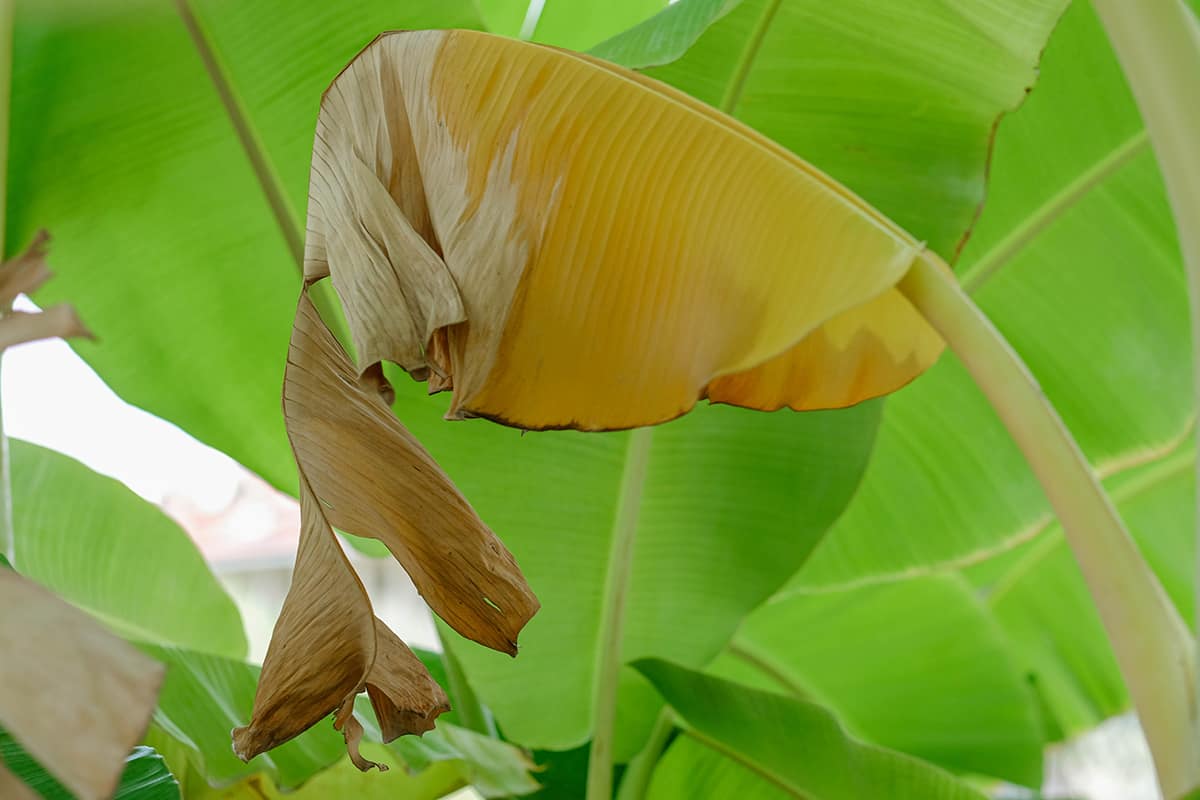
Yellow leaves can be a sign of numerous problems on a banana tree, including overwatering or underwatering. The way that the leaves start to turn color can help you identify what is behind this symptom. When nitrogen deficiency is an issue, the older leaves display problems first.
The whole leaf will fade to pale green, then yellow, before falling off. With a sulfur deficiency, the problem presents in the younger leaves first. Iron deficiency can cause leaf discoloration, and this is among the easiest to identify because the whole leaf will turn yellow except for the midrib, which can remain green for an extended length of time.
Small new leaves
If new leaves remain small and do not grow to full size while also having a permanently yellow-green color, this is an indication of a sulfur deficiency. This issue is rarely linked with other problems, so increasing the fertilizer feeding schedule should resolve the issue.
Deformed leaves
Leaves that appear torn along the margins, or have portions that look as though they are curling inwards, are typically a sign that the plant is suffering from a calcium deficiency.
Similar problems can occur when the plant is being underwatered, so it is best to check the moisture content of the soil before diagnosing a fertilizer issue. If the soil is appropriately moist, then a calcium deficiency is likely to blame. Increasing the frequency of fertilizer feeds should ensure that newly produced leaves are not deformed.
